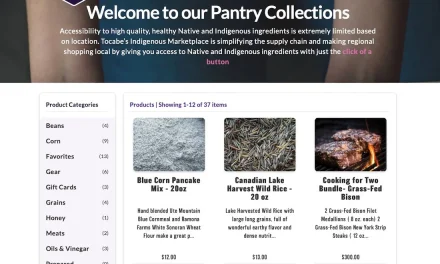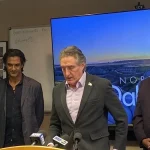When I was in venture capital, we made bets two ways.We either said: The market is great, and we’re going to bet that this company can capture that big market segment.The other way you invest in venture capital is you find dynamic entrepreneurs, and you invest in their big ideas. You work really hard with them to put the pieces they need in place to be successful.I would say here at First Nations, we are more tilted toward the latter.We have a lot of faith in the genius of Indian Country, and we invest in grassroots, early stage, community, social entrepreneurs. We make small and sometimes large-size investments in them, with the full knowledge that they can change the world.
How do you educate and capitalize ‘grassroots practitioners’ across Indian Country?We invest in genius and hard work in Indian communities throughout the U.S. We recognize that a lot of these folks have never had access to grant capital before. But we also believe that they’re fully in control. They have the best ideas for how to change and make their communities better.We understand that our job is to provide a little bit of capital — if we could, a lot of capital — and a little bit of technical assistance. The education part involves one-on-one technical assistance and small group and large convening technical assistance.Our education and reports empower organizations and individuals, so that they continue to thrive even when we’re not present.The other piece is the capitalization piece. We recognize that resources are scarce. You’ll see from some of our recent publications that the foundation community has horribly under-invested in Indian Country.[A recent report released by First Nations shows foundation giving to Native groups declined by nearly a third over an eight-year period, 2006–2014. It is estimated that the top 1,000 foundations gave roughly $9.6 billion more in 2012 than they did in 2006 (a 19 percent increase from 2006 to 2012). But grant dollars to Native American organizations and causes during this same period of time declined by $27.1 million or by 23 percent.]When you look at foundation investment to Indian-controlled organizations, it’s a pretty paltry number. We understand that part of the work that we do is try to wrest some of that money from foundations and owners and get it to Indian Country, so that we can capitalize some of those great projects.Twenty years ago, First Nations also created a wholly owned subsidiary called First Nations Oweesta Corporation. That subsidiary looks at the other part of the financial equation – access to debt capital in First Nations communities.First Nations Oweesta is just under 20 years old and has worked with Indian communities to create more than 72 Native Community Development Financial Institutions (CDFIs) over the last 20 years. [Roberts also serves as Chairman of the Board of First Nations Oweesta Corporation.]Oweesta is modeled much like First Nations – an apple doesn’t fall far from the tree. Oweesta provides technical assistance and training, while working to find capital in the form of debt capital to these Native CDFIs, who in turn provide debt capital to the individual borrowers.Lastly, part of this bigger equation is advocating for systematic change.We spend a lot of time educating the tribal communities themselves to advocate for systematic change – laws, regulations, practices that could make their lives and institutes better.









